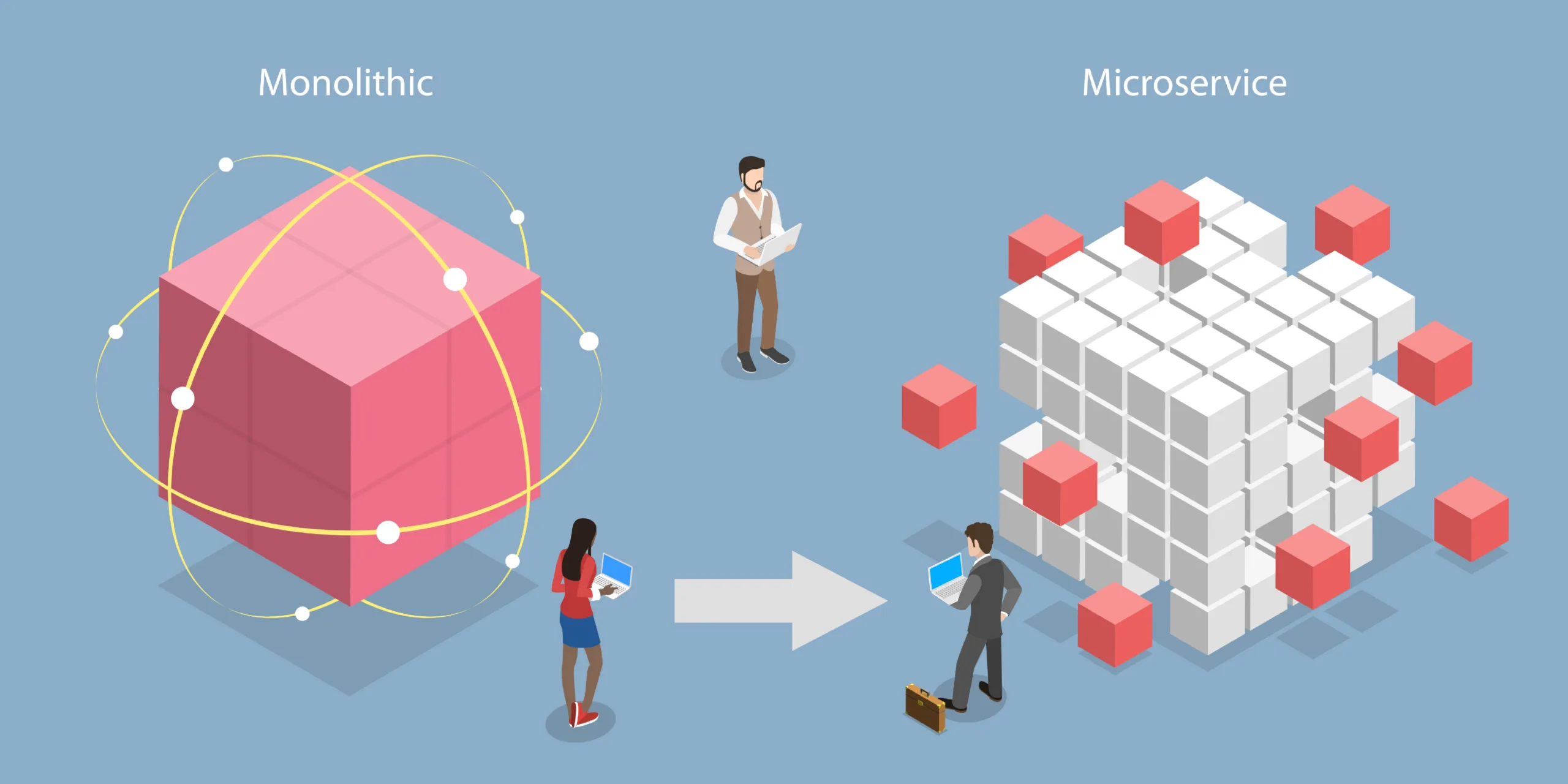Just two decades ago, the ecommerce industry was majorly powered by monolithic systems. These one-stop solutions were once hailed as the go-to platform for launching websites. However, the escalating competition and evolving customer expectations have pushed ecommerce brands to seek more adaptable and efficient solutions. This search has led to the increasing adoption of microservices and headless systems in the ecommerce arena.
Microservices architecture, or simply microservices, involves the creation of software systems through the assembly of discrete, single-function applications – much like building a complex structure using LEGO bricks. This type of architecture gets its name from the fact that each application operates as a small independent service. A core benefit of this architecture is that each service can scale independently, avoiding the potential bottlenecks characteristic of monolithic architecture where all components are unified into a single, central system.
The transition from monolithic to microservices architectures can be analogized with human societal evolution. Like self-sufficient hunter-gatherer societies transitioning to specialized city-based cultures, ecommerce platforms have evolved from self-contained monolithic systems to more distributed microservices models.
As businesses grow, monolithic systems can become sluggish and challenging to scale, prompting the need for a more decentralized, decoupled approach offered by microservices. This shift mirrors the evolution of human societies where people moved from jack-of-all-trades roles to mastering specific skills. Similarly, microservices allow businesses to utilize specialized services, leading to an agile platform that meets all business needs while keeping pace with dynamic market demands.
Despite the apparent simplicity of monolithic models, numerous brands have encountered issues with these holistic structures. Challenges include complication arising from customizations, slow responsiveness to market trends, high interdependence leading to a single point of failure, and exhaustive testing requirements for updates.
Headless commerce, a variant of microservices, involves separating the front-end presentation layer from the back-end ecommerce engine. This provides increased flexibility in content delivery, the ability to quickly adapt to customer expectations, and the opportunity to implement changes faster without compromising essential ecommerce components.
However, it’s crucial to understand that headless commerce and microservices are not synonymous. In a microservices architecture, the entire platform and service-oriented architecture are entirely decoupled. A headless system only decouples certain parts of the system, like the front-end and the back-end.
Many enterprise brands are gravitating towards microservices and headless systems to overcome the limitations of monolithic systems. Key advantages include insulating the back-end from heavy front-end traffic, increased customisation opportunities, rapid implementation of tech stack, leaner and more efficient tech stacks, and access to best-of-breed solutions.
However, a few challenges accompany the adoption of microservices, including organisational changes, infrastructural alterations, and potentially high costs for fully decoupled microservices. Consequently, some businesses might find headless solutions a more viable and affordable alternative.
Switching from a monolithic to a microservices or headless architecture can be incremental, allowing for a smoother transition. The so-called “strangler pattern” facilitates this process, where the monolith is gradually broken down into individual service components and replaced by microservices.


While microservices, headless, and distributed models aren’t the only solutions, they offer the flexibility many businesses need to succeed in today’s digital commerce landscape. The modularity of microservices architecture aligns with the growing need to deliver a powerful, dynamic customer experience across multiple channels. Evaluate your business needs and consider if adopting a microservices or headless model will help you reach your goals.
Microservices, also known as microservices architecture, involves building a software system by assembling small, single-function applications that operate independently but communicate with each other. Each service in this architecture can be scaled independently, offering a level of flexibility and scalability that is often absent in traditional, monolithic systems.
Headless commerce separates the front-end presentation layer from the back-end ecommerce engine. This allows for increased flexibility in content delivery and enables businesses to adapt quickly to changing customer expectations. It also provides the opportunity to implement changes faster without affecting the core ecommerce components.
While both microservices and headless commerce involve a level of decoupling, they’re not the same. In a microservices architecture, the entire platform, including the service-oriented architecture, is fully decoupled. On the other hand, headless commerce involves decoupling only specific parts of the system, such as the front-end from the back-end.
Microservices and headless commerce offer several advantages over monolithic systems. These benefits include insulating the back-end from heavy front-end traffic, offering increased customisation and personalisation opportunities, allowing for rapid tech stack implementation, and providing leaner, more efficient tech stacks. They also give businesses the opportunity to choose best-of-breed solutions that specialise in their specific needs.
Yes, transitioning to a microservices or headless commerce architecture can require organizational changes, infrastructure modifications, and potentially significant financial investment. However, this transition can be carried out incrementally to mitigate disruption.
The ‘strangler pattern’ is a method for transitioning from a monolithic to a microservices or headless architecture. It involves gradually breaking down the monolithic system into individual service components and replacing them with microservices.
Not necessarily. While many businesses can benefit from the flexibility and scalability offered by microservices and headless commerce, these models may not be the best fit for every company. It’s important to evaluate your specific business needs, your resources, and your long-term goals before deciding to switch.

